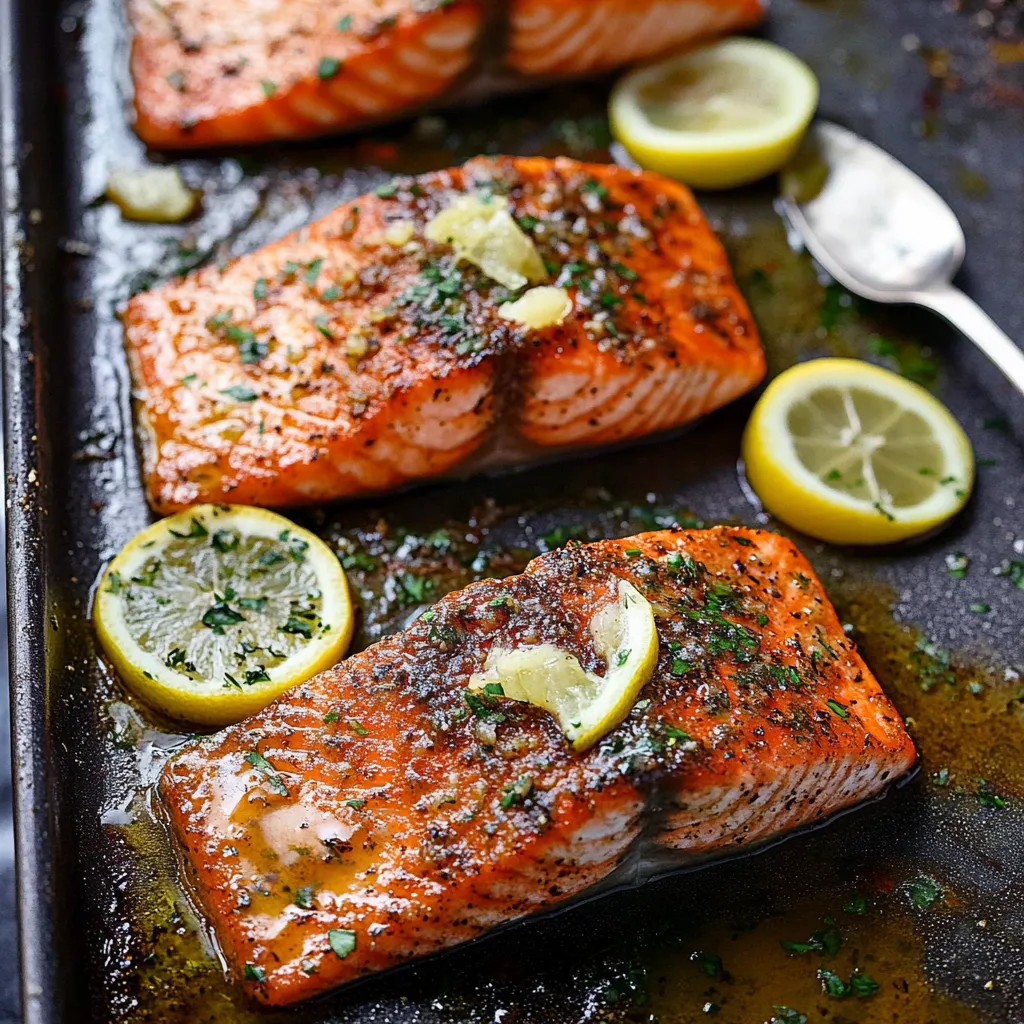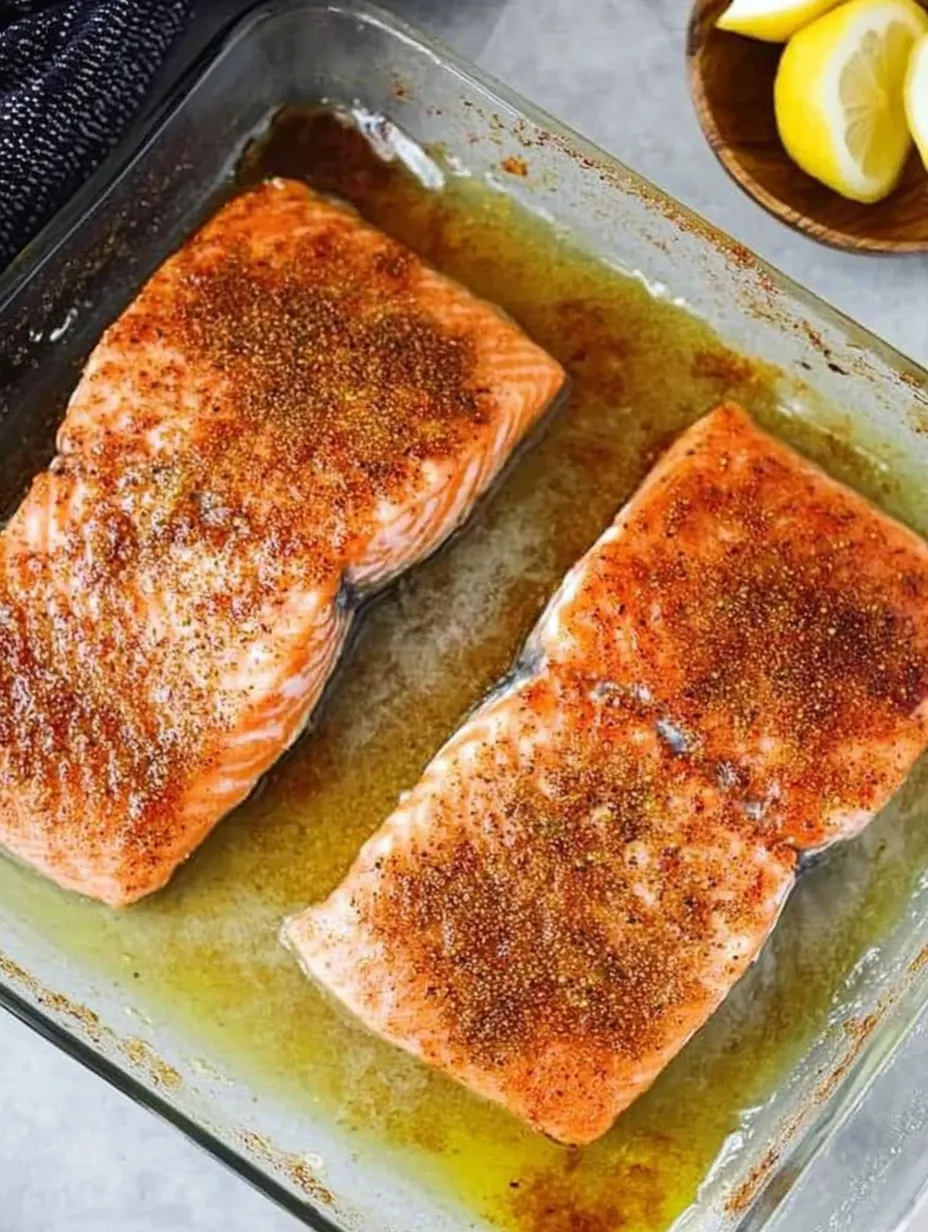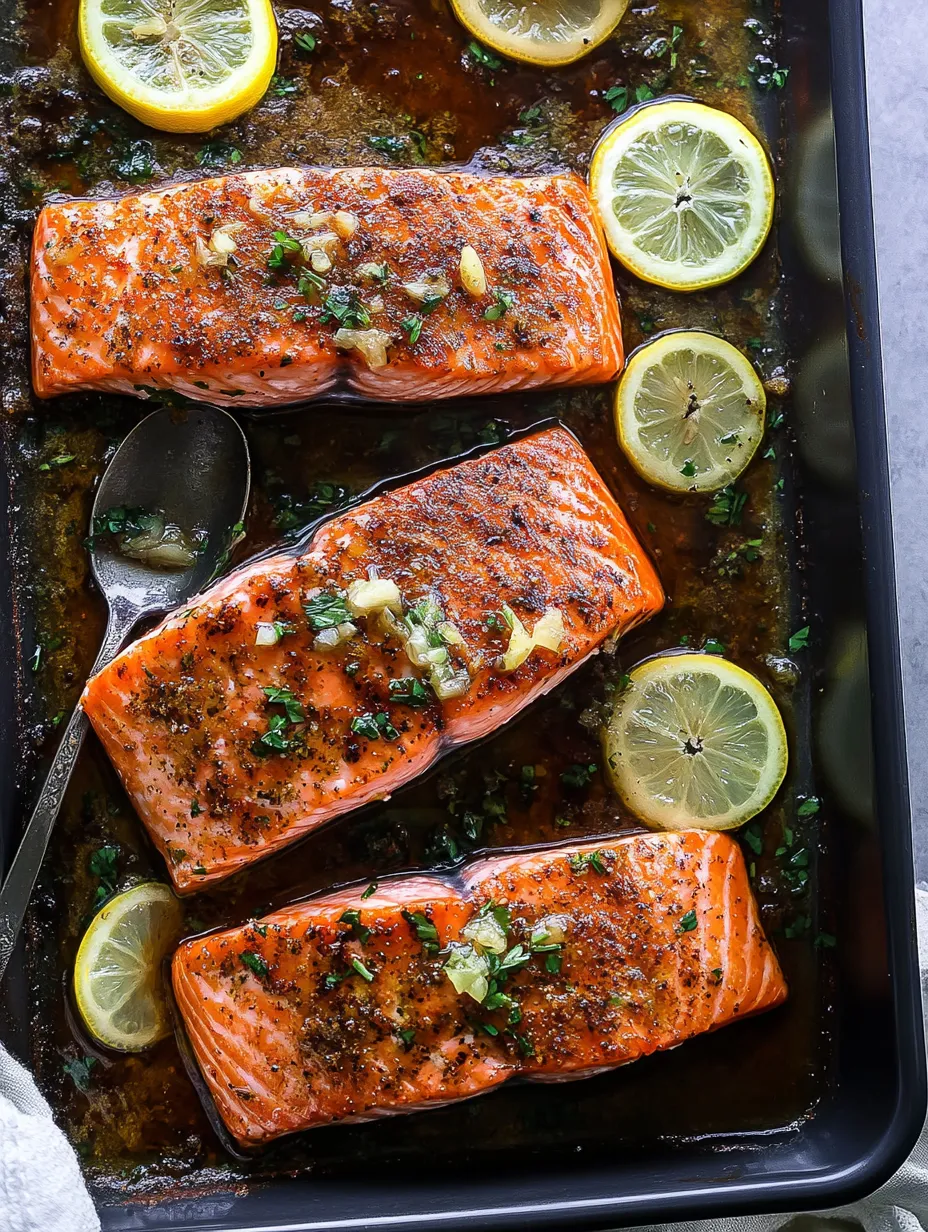 Pin it
Pin it
Elegant Weeknight Fish
This extraordinary salmon dish transforms ordinary fillets into something truly special through the perfect balance of sweet maple and tangy mustard that creates a gorgeous glaze in minutes. The magic happens when these simple ingredients caramelize slightly in the oven, developing complex flavor while keeping the fish perfectly moist. I discovered this recipe during a particularly hectic season when I needed impressive yet effortless meals that wouldn't add stress to already full evenings.
Weeknight Wonder
My journey with this recipe began when searching for healthier dinner options that wouldn't feel like a compromise on flavor. What started as a practical solution quickly became our household's most requested salmon preparation. Even my daughter, who typically approaches fish with skepticism, asks for this specifically on our weekly menu. The first time I served it to guests, they assumed it had required significant culinary skill, making it my secret weapon for effortless entertaining.
Quality Components
- Fresh Salmon Fillets (4 portions, 6 ounces each): Create the perfect canvas for the glaze with their rich flavor and beautiful color, working equally well with or without skin
- Pure Maple Syrup (3 tablespoons): Provides essential sweetness and caramelization potential that forms the foundation of the glaze, impossible to substitute with artificial alternatives
- Dijon Mustard (2 tablespoons): Delivers the perfect tangy counterpoint to the maple with complex flavor and subtle heat that balances the sweetness beautifully
- Fresh Garlic (2 cloves, minced): Adds aromatic depth that permeates the glaze, mellowing during cooking while enhancing the other flavors
- Paprika (1/2 teaspoon): Contributes subtle warmth and beautiful color development without overwhelming the delicate fish flavor
- Dried Dill (1/2 teaspoon, optional): Complements the salmon with its traditional pairing potential, adding herbal notes that enhance without dominating
 Pin it
Pin it
Simple Technique
- Preparation Mastery:
- Begin by bringing your salmon to room temperature for approximately 15 minutes before cooking, which ensures more even cooking and better glaze adherence. Meanwhile, preheat your oven to 400°F, positioning the rack in the center for optimal heat circulation. Select a baking dish large enough to hold all salmon fillets without crowding, which would create steam and prevent proper glazing. Line the dish with parchment paper for easy cleanup and to prevent any sticking, especially important with this sweet glaze that tends to caramelize during cooking. In a small bowl, whisk together 3 tablespoons pure maple syrup, 2 tablespoons Dijon mustard, and 2 minced garlic cloves until completely smooth and uniform. This simple combination creates the foundational flavor that defines this dish, with each element playing an essential role in the final result.
- Salmon Preparation:
- Place your salmon fillets in the prepared baking dish, skin side down if using skin-on pieces. The skin provides a natural protective layer between the delicate flesh and the hot baking dish, helping prevent overcooking of the bottom portion. Pat the tops and sides of the fillets gently with paper towels to remove any excess moisture, which allows the glaze to adhere properly rather than sliding off during cooking. Using a pastry brush or small spoon, generously coat the top and sides of each fillet with the maple mustard mixture, ensuring complete coverage. Reserve approximately 2 tablespoons of the glaze for serving if desired, setting it aside before brushing the raw fish to prevent cross-contamination. Season the glazed fillets with a light sprinkle of salt, freshly ground black pepper, paprika, and dried dill if using, applying with a light hand to complement rather than overwhelm the glaze flavors.
- Perfect Baking:
- Place the prepared baking dish with glazed salmon on the center rack of your preheated oven. Bake for 10 to 12 minutes, depending on the thickness of your fillets and your preferred doneness. The perfect salmon should be just opaque throughout and flake easily with a fork when tested in the thickest part. Avoid the common mistake of overcooking, as salmon continues to cook slightly from residual heat after removing from the oven. For fillets approximately 1 inch thick at their thickest point, 10 minutes typically creates medium doneness, while 12 minutes results in more thoroughly cooked salmon. If using an instant-read thermometer, aim for 125°F for medium or 130°F for medium-well salmon that remains moist and tender.
- Finishing Touches:
- Remove the baking dish from the oven once the salmon reaches your desired doneness. Allow the fillets to rest for approximately 2 minutes, which permits the juices to redistribute throughout the fish for maximum moisture retention. During this brief resting period, the glaze will set slightly, creating the perfect consistency. If you reserved additional glaze, warm it gently in the microwave for 10 seconds and brush a small amount over each fillet just before serving for an extra layer of flavor and beautiful sheen. Transfer the salmon to serving plates using a thin spatula, sliding it between the skin and flesh if you prefer to leave the skin behind. Serve immediately while hot for the best flavor and texture experience, perhaps with a small wedge of lemon for those who enjoy a bright citrus accent with their salmon.
I particularly appreciate how this recipe simplifies healthy eating without sacrificing flavor. Growing up, fish often appeared on our family table as a dutiful nutritional choice rather than something to anticipate eagerly. This preparation changed my relationship with salmon entirely, transforming it from occasional health food to craved comfort. When teaching my nephew basic cooking skills, this became his first "impressive" dish, building confidence through its foolproof nature. My mother, typically resistant to recipes not from her well worn cookbook collection, now prepares this regularly after tasting it at our table, perhaps the highest compliment a recipe can receive.
Perfect Pairings
This versatile salmon welcomes numerous side dishes that complement its sweet and tangy profile. For a complete meal requiring minimal effort, roast vegetables on a separate sheet pan while the salmon bakes. Broccoli florets, asparagus spears, or halved Brussels sprouts tossed with olive oil, salt, and pepper roast perfectly at the same temperature, requiring just a few additional minutes. For a starch component, consider simple roasted baby potatoes seasoned with herbs, or wild rice pilaf that offers nutty contrast to the glazed fish. Fresh green salads dressed with light vinaigrette provide refreshing counterpoint to the rich salmon, with arugula or mixed greens topped with segmented citrus particularly complementary. For entertaining, serve alongside a chilled cucumber and dill salad that echoes traditional salmon pairings while providing temperature contrast.
Creative Variations
This foundation recipe welcomes numerous adaptations based on preference or available ingredients. For texture enthusiasts, substitute grainy mustard for traditional Dijon, creating pleasant pops of mustard seed throughout the glaze. Those enjoying heat might add a pinch of cayenne or a drizzle of hot honey in place of some maple syrup for subtle spiciness. Herb variations create entirely different experiences, with fresh thyme or rosemary added to the glaze for aromatic depth, or a finish of chopped fresh parsley or chives adding bright color and flavor. Citrus lovers might incorporate orange or lemon zest into the glaze mixture for additional dimension. The technique also works beautifully with other fish varieties, including trout, arctic char, or even thick white fish fillets like halibut, though cooking times may require adjustment based on thickness. For a dinner party variation, prepare individual portions in parchment paper packets, allowing guests to unwrap their own aromatic serving.
 Pin it
Pin it
Storage Strategy
While this salmon reaches its absolute peak when freshly prepared, leftovers can be properly stored and repurposed. Allow any remaining salmon to cool completely before refrigerating in an airtight container for up to three days. Cold leftover salmon makes exceptional salad toppers, with the maple mustard flavor complementing mixed greens beautifully. For reheating, the microwave often overcooks delicate fish, so instead warm gently in a 275°F oven covered with foil just until heated through, approximately 10 minutes. Alternatively, bring to room temperature and enjoy cold or just slightly chilled, which prevents the flaking and drying that can occur with reheating. The glaze itself keeps well in a separate container in the refrigerator for up to one week, ready to enhance additional protein options like chicken breasts or pork tenderloin with its signature sweet tangy profile.
After preparing this dish countless times across seasons and circumstances, I've come to appreciate it not just for its delicious flavor but for how it exemplifies efficient yet sophisticated home cooking. What begins as simple ingredients transforms through minimal effort into something that feels special enough for celebrations yet accessible enough for weeknight reality. The beautiful balance of sweet and savory, combined with the inherent elegance of salmon, creates a meal that nourishes both body and spirit without demanding excessive time or culinary expertise. While restaurant salmon often disappoints with overcooking or heavy sauces, this homemade version delivers perfectly cooked fish enhanced rather than masked by its flavorful glaze, proving that sometimes the most satisfying meals are also the simplest.
Frequently Asked Questions
- → What's the best type of salmon to use for this recipe?
- For the best results, use fresh, high-quality salmon fillets that are uniform in thickness (about 1-1.5 inches thick) to ensure even cooking. Wild-caught varieties like Sockeye, Coho, or King salmon offer excellent flavor, though they're typically leaner than farm-raised Atlantic salmon, which has a higher fat content and more forgiving cooking time. Center-cut portions provide the most consistent results. If possible, purchase salmon the day you plan to cook it. If using frozen, thaw completely in the refrigerator overnight and pat dry with paper towels before glazing. Both skin-on and skinless fillets work well in this recipe - skin-on provides extra protection against overcooking on one side, while skinless allows the glaze to coat more surface area.
- → How can I tell when the salmon is perfectly cooked?
- Perfectly cooked salmon should be moist, tender, and just opaque throughout. The most reliable method is using an instant-read thermometer inserted into the thickest part - aim for 125°F (52°C) for medium-rare or 130°F (54°C) for medium. Without a thermometer, look for these visual cues: the salmon should change from translucent to opaque pink, and when gently pressed with a fork, it should flake easily but still maintain its structure. The center can be slightly darker pink than the exterior. Remember that salmon continues cooking slightly after removal from the oven, so it's better to remove it a minute early rather than risk overcooking, which results in dry, tough fish.
- → Can I use honey instead of maple syrup for the glaze?
- Yes, you can substitute honey for maple syrup with excellent results. Honey provides a similar level of sweetness but will impart a different flavor profile - more floral and intense compared to maple syrup's more subtle, caramel-like sweetness. When substituting, use the same amount (1:1 ratio). If your honey is very thick, warming it slightly will help it blend better with the mustard. Other alternatives include agave nectar (milder and thinner) or brown sugar mixed with 1 tablespoon of water (more molasses notes). Each alternative will slightly alter the final flavor, but all will create a delicious sweet-savory glaze that complements the salmon beautifully.
- → What sides pair well with Maple Mustard Glazed Salmon?
- This versatile salmon pairs beautifully with numerous sides. For a complete meal, consider: 1) Grains - wild rice pilaf, quinoa, or couscous soak up the extra glaze deliciously. 2) Vegetables - roasted asparagus, brussels sprouts, or green beans complement the salmon's richness. 3) Starches - roasted sweet potatoes, mashed potatoes, or fingerling potatoes provide comforting contrast. 4) Salads - a simple arugula salad with lemon vinaigrette or a kale salad with dried cranberries offers freshness. For a time-saving approach, roast vegetables on a separate sheet pan while the salmon bakes. For an elegant presentation, serve with steamed vegetables and a grain medley dressed with a bit of the same maple-mustard mixture used for the salmon.
- → Can this Maple Mustard Glazed Salmon be grilled instead of baked?
- Absolutely! This salmon adapts wonderfully to grilling, which adds a delicious smoky dimension. For grilling: 1) Preheat the grill to medium-high (about 400°F). 2) Ensure grates are clean and well-oiled to prevent sticking. 3) If using skin-on salmon, start skin-side down and cook for about 4-5 minutes. 4) Carefully flip the salmon and brush with the glaze. 5) Cook for another 3-4 minutes until desired doneness. For added flavor, consider using cedar planks soaked in water for at least 1 hour before grilling. This infuses the salmon with a subtle woody flavor while also making the cooking process more forgiving. Remember that grilled salmon typically cooks slightly faster than baked, so adjust your timing accordingly.
- → How can I make this recipe for meal prep?
- This salmon works excellently for meal prep with a few adjustments: 1) Slightly undercook the salmon by 1-2 minutes, as it will continue cooking during reheating. 2) Cool completely before refrigerating in airtight containers. 3) Store for up to 3 days in the refrigerator. 4) For reheating, gentle methods work best - microwave at 50% power in 30-second intervals until just warmed through, or reheat covered in a 275°F oven for about 15 minutes. Make extra glaze to refresh the salmon after reheating. For a complete meal prep, portion with pre-cooked rice or quinoa and vegetables that hold up well (like roasted broccoli or sweet potatoes). You can also enjoy leftovers cold on salads or transformed into salmon cakes for variety.
